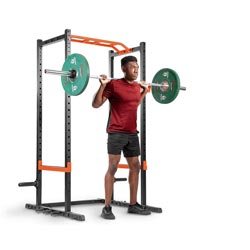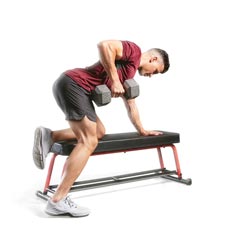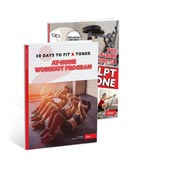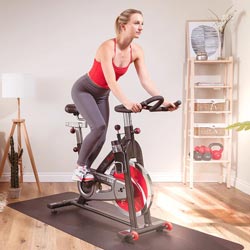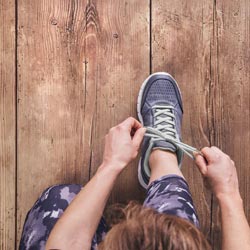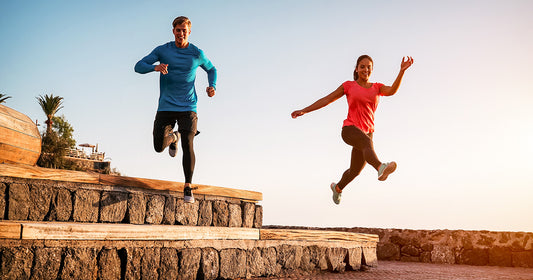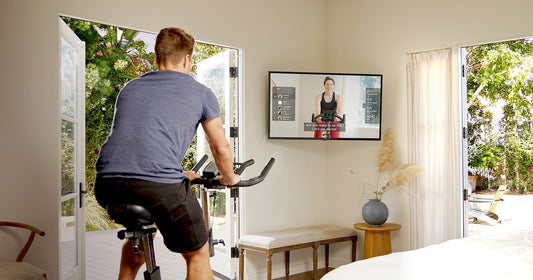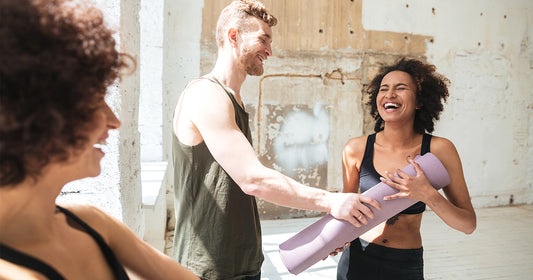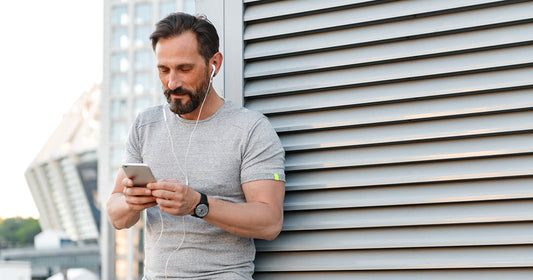Published on 1/22/2020, Updated on 9/21/2021
If you love cycling or even have a cycle bike in your own home, investing in a dedicated pair of cycling shoes can transform your cycling workout from good to great!
Make the switch from your regular trainers to cycling shoes and experience a more comfortable, efficient, and safer ride. Cycling shoes are light and breathable with stiff soles for maximum power in each pedal stroke.
Most importantly, cycling shoes have the addition of cleats, which you’ll be able to clip into your pedals for increased stability and security to your ride. Clipping into the pedals gives you the ability to focus on what’s most important: the energy you’re putting into your workouts.
Many factors go into picking out the correct type of cycling shoe for you, and if you’re new to the market, it’s hard to know what to look for.
Lucky for you, I’ve put together three easy steps that will help you figure out how to choose the perfect cycling shoes to take your cycling experience to the next level!
Are all indoor cycling shoes the same?
Indoor cycling shoes and bike pedals are very similar to cell phones and their respective chargers. There are two different kinds, and you need the correct type of charger to plug into the cellphone, or it won’t charge.
Cycling shoes containing cleats that clip into pedals are either SPD-compatible or Delta-compatible. It is essential to note which pedals your bike has before purchasing indoor cycling shoes.
All Sunny Cycle Bikes come with adjustable toe cages so that riders can use any shoe of choice, whether that be cycling shoes or sneakers. However, flip that pedal over, and on some Sunny bikes, you will find an SPD-compatible clip.
This clip allows users wearing cycling shoes with cleats to connect directly into the pedals as they ride for a more comfortable and safe riding experience. Cleats are the hardware that connects to the shoe and clips into the pedal.
Once you know what type of pedals you have, it will narrow down your cycling shoe choice. All you need with adjustable toe cages is your regular trainers, or you can up your game with flat (no cleat connection) cycling shoes.
If you want to clip into SPD-compatible pedals, you’ll need to invest in both cycling shoes and cleats, as the cleats are often sold separately - more on this later.
How do I choose indoor cycling shoes?
Here are three factors to consider to find the perfect cycling shoe for you.
1) Shoe Fit
For the best indoor cycling experience, the ideal shoe should make your feet feel comfortable and supported. They should feel stiff, not uncomfortable. Cycling shoes are stiff because that design provides the most efficient pedaling experience.
Still, if they feel uncomfortable now, it’s not likely that when you break them in, they’ll become more comfortable. You’ll want to have a little wiggle room for your toes, but your heel should be snug.
Remember, walking feels different than cycling, so a good test for heel fit is arching up onto your toes, similar to how you might when pedaling.
2) Shoe Closures
There are also many shoe closures to choose from, from laces to hook-and-loop straps, buckles, and dials. While laces might be your go-to choice, laces can quickly come undone and become caught and are harder to adjust mid-ride than the other options available.
Velcro straps are the most accessible and convenient to quickly throw on or take off if you plan to incorporate exercises off the bike. So it’s really up to your preference; remember, if you do choose laces to tuck them in, so you don’t have any mishaps.
3) Shoe Type
There’s a wide variety of shoes to choose from, and with so many options, it can be pretty confusing. It comes down to which bike you own, how else you intend to exercise (i.e., keeping the cycling shoes on while exercising off the bike), and personal style preference.
Which cleats are best for indoor cycling?
Casual Cycling Shoes
Most beginners will be happy with Casual cycling shoes. Casual cycling shoes have the closest resemblance to regular trainers. They come with either a 2-hole cleat system (SPD-compatible cleat) or come flat with no cleat connection.
They typically have rubber outsoles, and recessed cleats to allow for easy walking and are stylish and comfortable.
Recessed cleats are excellent for anyone looking to exercise off the bike as the cleat won’t elevate your feet off the ground. They won’t be as stiff as MTB or road bike shoes, so you may lose a little power when pedaling compared to these models of shoes.
MTB Shoes
Mountain Bike Shoes (MTB) is another popular choice for indoor cyclists as they also come with a 2-hole cleat system making them compatible with SPD-compatible cleats. They are also easy to walk around and usually have padded grips for the trickier terrain that mountain biking can present.
MTB shoes will be stiffer than casual biking shoes, creating a more efficient pedaling experience. However, these shoes may also feel heavier as they are designed for more intense terrain and outdoor elements.
Road Cycling Shoes
Road Cycling shoes are incredibly efficient as they’re both the most lightweight and stiff shoe and are designed for maximum performance. This type of cycling shoe is the most popular and common for indoor cycle bike riders.
If you’re into competitive cycling or getting more serious about your cycling journey, this could be an excellent option for you. These shoes can be compatible with either SPD (2-hole) or DELTA (3-hole) clip-in system. If you decide to go with road shoes, you’ll want to be careful to pick a shoe with a clip-in system that matches your pedals.
The cleats also protrude from the shoe, making it hard to walk around and unideal for pedals with no cleat attachment.
If you have SPD-compatible pedals to clip in, you will need both cycling shoes and the SPD-compatible cleats sold separately. SPD cleats can be purchased for as little as $15 and must be installed.
You can install the cleats on your own by placing them right under the widest part or ball of your foot. However, cleats installed at the wrong angle or location can lead you to pedal incorrectly, causing potential pain and injury in your hips, knees, or ankles.
We recommend visiting a local cycling shop to assess your pedal stroke in-store and install your cleats for you for the best fit.
Keep an Allen wrench handy to tighten your cleats if they loosen. They may get looser with regular use, and you want them nice and tight for the safest riding experience. You will also need to replace your cleats as they wear down. You’ll know it’s time if it’s hard to clip in and out of the pedals.
Happy riding!


